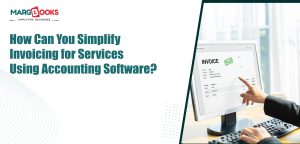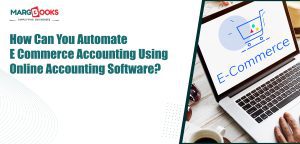Every month, thousands of small business owners spend countless hours creating invoices, chasing payments, and reconciling accounts manually. Simran, who runs a textile business, used to spend three days every month just organizing her billing records and matching payments to invoices.
The frustration of manual accounting goes beyond time loss. Errors creep in, customers receive delayed invoices, and cash flow suffers. This is where an E Invoice System becomes a game-changer for businesses looking to automate their accounting workflow without losing control over their finances.
When done right, digital invoicing eliminates repetitive tasks and creates a smooth flow from order to payment. Let’s explore how this transformation happens.
How To Streamline Your Accounting Process?
Digital invoicing isn’t just about replacing paper bills with electronic ones. It’s about creating an integrated workflow that connects your sales, inventory, and accounting processes into one seamless operation.
The right system handles calculations, applies taxes correctly, and tracks payments automatically. This means less time spent on administrative work and more focus on growing your business.
The Problem With Manual Accounting Workflows
Manual accounting creates bottlenecks that slow down entire business operations. Understanding these pain points helps explain why automation makes such a difference.
Why Traditional Billing Slows Down Operations?
Traditional billing requires multiple steps that don’t connect. You create an invoice in one system, track inventory in another, and handle payments separately. Each step requires manual data entry, which takes time and introduces errors.
When customers need invoice modifications or have payment questions, you have to search through files and spreadsheets. This back-and-forth communication delays payments and frustrates both parties.
The monthly reconciliation process becomes a nightmare when you’re dealing with dozens or hundreds of transactions. Matching payments to invoices, identifying outstanding amounts, and preparing financial reports can take days.
Risks of Manual Entry and Reconciliation
Human errors in manual entry cost businesses money and credibility. A simple typo in an amount or tax calculation can lead to compliance issues or customer disputes.
Duplicate invoices happen when team members aren’t coordinated. Customers receive multiple bills for the same order, creating confusion and payment delays.
Lost invoices are another common problem. When bills get misplaced or forgotten, payments get delayed, affecting cash flow. Some invoices never get sent at all, resulting in lost revenue.
How does an E Invoice System Makes Accounting Smoother?
Automation removes the friction points that slow down manual processes. An E Invoice System creates a connected workflow where information flows automatically between different business functions.
Real-Time Invoice Generation and Delivery
Modern invoicing systems generate bills instantly when orders are completed. This immediate processing means customers receive invoices while the transaction is still fresh in their minds, leading to faster payments.
Key advantages include:
- Less data entry – Customer information, product details, and pricing pull automatically from your database
- Automatic tax calculation – The system applies correct tax rates based on customer location and product type
- Faster billing cycle – Invoices go out the same day instead of waiting for manual processing
Email delivery ensures invoices reach customers immediately. No delays from the postal service or concerns about lost mail. Customers can view, download, and pay invoices directly from their email.
Integration with Banking & Tax Tools
The real power of an E Invoice System shows when it connects with your bank accounts and tax software. Payments get recorded automatically when they arrive, updating your books without manual entry.
Tax reporting becomes simpler because all transaction data is already organized and categorized. When it’s time to file returns, the information is ready to export directly to your tax software.
It offers seamless integration with major Indian banks, making payment reconciliation automatic. This connection eliminates the tedious task of matching bank statements to invoices manually.
Role of Specialized Tools in Niche Sectors
Different industries have unique invoicing needs that generic software can’t address properly. Specialized tools understand industry-specific requirements and automate accordingly.
Why Fashion Firms Prefer Garment Distribution Software?
Fashion and textile businesses deal with complex inventory tracking, size variations, and seasonal pricing. Our garment distribution software handles these complexities by managing style codes, color variations, and size matrices automatically.
These systems track fabric consumption, calculate costs per piece, and manage bulk orders with different delivery schedules. Regular invoicing software struggles with these industry-specific requirements.
The integration between inventory management and billing ensures accurate stock levels and prevents overselling. When an order is invoiced, inventory reduces automatically across all sizes and color combinations.
Faster Cash Flow Using Cloud Invoicing Software
Cash flow management improves significantly when invoicing happens in real-time. It allows businesses to create and send invoices immediately, regardless of location.
Mobile access means sales teams can generate invoices on-site after completing deliveries. Our cloud invoicing software gives instant billing, reduces the gap between delivery and payment, and improves cash flow.
Cloud systems also provide real-time visibility into outstanding payments. Business owners can see which invoices are overdue and take immediate action to collect payments.
Margbooks and Its Practical Features
Small and medium businesses need invoicing solutions that are powerful yet simple to use. The right software should handle complex requirements without overwhelming users with unnecessary features.
Clean Tax Reporting
Tax compliance becomes straightforward when your E Invoice System organizes transactions properly from the start. Margbooks maintains detailed records of all tax calculations, making audit preparation simple.
The system automatically separates CGST, SGST, and IGST based on customer location. This accurate tax tracking prevents compliance issues and reduces the risk of penalties during tax audits.
Simple Multi-user Setup for SMEs
Growing businesses need multiple team members to access invoicing functions without compromising security or data integrity. Margbooks allows controlled access where each user sees only relevant information.
Conclusion
Manual accounting processes create unnecessary work and delay payments, hurting cash flow and business growth. Our MargBooks solution isn’t just about replacing paper with digital files. It’s about creating an integrated system that handles routine tasks automatically.
An E Invoice System transforms accounting from a time-consuming burden into a streamlined process that supports business growth. The key is choosing a system that fits your industry’s needs and integrates well with your existing tools.
Take time to evaluate your current invoicing process and identify the biggest pain points. Once you understand where automation can help most, implementing the right system becomes a straightforward decision that pays dividends immediately.




